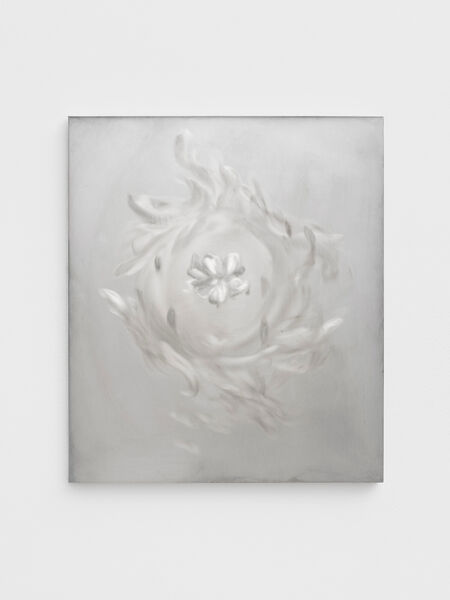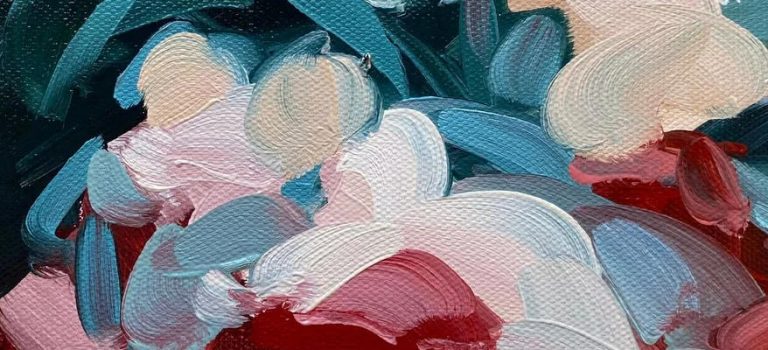Source: Artsy.
Emerging art is the bedrock of the art ecosystem. Most often thought of in terms of young artists and recent graduates, the category is best described as work by an artist at the start of their career. These artists are vital for introducing fresh perspectives and styles into the art world, often spearheading trends that later become prominent.
“Emerging artists make the whole ecosystem within the contemporary art world vibrant,” said Louise Chignac, director of London-based gallery Canopy Collections.

Portrait of Cécile Ganansia and Louise Chignac. Photo by Kendal Noctor & Katie Callaghan. Courtesy of Canopy Collections.
For new and seasoned collectors alike, collecting works from emerging artists is one of the most rewarding—and accessible—ways to collect art. As well as securing works at a more approachable price point, collectors have the chance to invest in and support the careers of artists at their most crucial stage. “They are the very source that makes it a dynamic scene and an interesting place to contribute. Supporting emerging artists is vital in keeping the art economy alive and fresh over the years,” added Chignac.
This week, Artsy launched Foundations Summer 2024, the online art fair for emerging art. Spotlighting rising talents from tastemaking galleries across the globe, the fair features presentations from 70 galleries known for nurturing early-career artists and runs until August 12th.
Here, we speak to expert figures from galleries that work with these artists about what collectors need to know about emerging art, and how to start collecting it.
What is emerging art?

Emmet Kierans
£2,800

Portrait of Frazer Bailey. Photo by Joe Ereira. Courtesy of Moosey.
Every blue-chip artist—from Tracey Emin to Alex Katz—was once an emerging artist. Like today’s emerging talents, these artists once worked at the nascent stages of their careers to carve a niche for themselves within an ecosystem of galleries, collectors, and critics. But what exactly is the difference between emerging and established art?
An established artist is typically backed by a substantial body of work that has achieved international recognition by appearing in significant museum shows, publications, and collections. Several of these are occasionally referred to as blue-chip artists due the higher price points that their works command.
Meanwhile, an emerging artist “is exactly what it says on the tin: someone new that hasn’t been really seen before, hasn’t done any shows, and doesn’t have a huge following,” according to Frazer Bailey, director of London gallery Moosey.

Bianca Maccall
Price on request
![Amir Tomashov, ‘Non-symbiotic [Diptych 2/2] (Exposed Landscape No.12) A’, 2023, Drawing, Collage or other Work on Paper, Graphite on plywood, Litvak Contemporary](https://d7hftxdivxxvm.cloudfront.net/?quality=80&resize_to=width&src=https%3A%2F%2Fd32dm0rphc51dk.cloudfront.net%2FwLmslopYw3jMSEEzAi2nLg%2Fmain.jpg&width=450)
Amir Tomashov
US$1,250
This can include artists who have recently graduated from college or have yet to secure gallery representation. However, it can also include artists of different ages, united by the fact that they are at the budding stages of their careers.
Many of these artists are pushing the needle forward across the creative and commercial sides of the art world. Orit Ephrat-Moscovitz, director of Litvak Contemporary, said that these artists are often “dealing with contemporary issues” and “displaying fresh and innovative ideas.”
Between emerging and established artists lies the mid-career segment, encompassing artists who have been actively creating, showing, and selling their art for around a decade. These artists have established an audience for their work and exhibited in museum shows, gallery exhibitions, and international art fairs.
Why collect emerging art?

Lara Davies
£4,800

Linda Kamille Schmidt, insallation view of “Fiber Space” at Garvey | Simon in New York, 2024. Courtesy of Garvey | Simon.
Supporting emerging art allows collectors to discover new voices in the art world and invest in them at the most crucial stage of their careers.
“When you are an art lover, supporting new artists gives you great satisfaction,” said Ephrat-Moscovitz. “Purchasing works of emerging artists provides the artists with financial support, enabling them to continue creating and developing their practice. This is very important for the artists themselves, the galleries, and the entire art community. It maintains a continuous flow of new ideas, techniques, fresh perspectives, and innovative works.”
Emerging art also tends to have a lower price point and barrier to entry than other segments of the market. Artworks at Foundations, for example, are priced from $500 to $10,000.

Lynnette Therese Sauer
US$1,500

Elli Antoniou
£1,800
For new collectors, this provides an ideal point to engage with galleries and artists. “It’s the accessibility, the price point, an easier way to enter the art market and build a relationship, and a sense of community,” said Chignac. For established collectors, meanwhile, she notes, it “brings a bit of novelty and refreshing within the collection. It allows them to create links with more contemporary or mega-contemporary practices to reactivate and update the collection they already have.”
Several emerging artists also go on to have major careers and command much higher price points down the line. “Acquiring emerging art has an investment potential; the works usually have an accessible price point, and the value can significantly increase over time,” said Ephrat-Moscovitz.

Portrait of Liz Garvey. Courtesy of Garvey | Simon.
Collecting emerging art also helps to support the small galleries that exist at the heart of the art world, and are uniquely positioned to unlock direct access to their local art scenes. By supporting these small galleries, you bolster the financial support for the artist at the earliest stages while also paving the way for their market for years to come.
“No matter who you’re supporting or loving as an artist—wanting to have in your home—you’re helping artists,” said Liz Garvey, co-founder of New York’s Garvey | Simon. “If we’re separating emerging from blue chip and well-established, we’re looking at a different market that tends to be a lower price point. But, either way, you are really supporting artists.”
How do I start collecting emerging art?

Emmet Kierans
£2,400

Kanny Yeung
£3,900
The best way to start collecting emerging art is to explore as much of it as possible.
The Curated Highlights from Artsy’s online fair Foundations Summer 2024 are an ideal place to start. Organized by theme, they provide an accessible entry point to discover the artists and artworks that suit your taste, whether that’s abstraction or sculpture. You can also browse the virtual booths of the galleries participating in the fair to get a sense of their programs and presentations.

Antonia Rodrian
€2,200

Calli Moore
US$4,000
Once you begin to find the artworks, galleries, and artists that you like, you have the springboard to start building a collection and unearthing more of the emerging art that suits your taste.
Here, we share six tips for how to get started with building a collection of emerging art:
- Follow emerging artists and galleries on Artsy. Download the Artsy app and create an account to follow artists and galleries from across the world. Browse new works on Artsy, follow your favorite galleries and artists, and you’ll be notified whenever they upload new work. You’ll also receive recommendations for artists and works that align with what you’re interested in.
- Engage with galleries. The galleries exhibiting at Foundations have established track records for nurturing early-career artists and operating tastemaking programs. If a gallery’s presentation at Foundations catches your eye, then it’s likely that their overall program will also be of interest. “Find the right gallery that suits your taste,” said Bailey. “Align yourself with a gallery that’s focusing on [understanding] emerging art.”
- Attend graduate shows and MFA exhibitions. Every year, many of the world’s top MFA programs host an end-of-year exhibition to exhibit works by their graduating class of artists. These shows are rich with emerging talent—and many galleries, small or large, pay close attention to these artists. “Start checking out MFA shows, because these days there’s a lot of dealers mining those exhibitions and looking for people,” said Garvey.

Sarah Cohen
Sold

Gail Spaien
Mid Afternoon, 2023
Taymour Grahne Projects
- Explore Instagram. By far the most used social media platform for artists and galleries, Instagram is likely where the next generation of emerging talent is waiting to be discovered. Start by following your favorite artists, galleries, and curators, and build from there. “Instagram is the tool, isn’t it? It’s a lot of grassroots [effort]: finding galleries in the middle of nowhere or trying to break out of your algorithm on Instagram and finding new people,” said Bailey.
- Engage with your favorite artists’ communities. If you enjoy the work of an emerging artist, exploring their network and local scenes can provide a springboard for further discovery. “If you know of some artists or discover artists that you really like, you can look at their group shows to see who else they’ve shown with. Try to dig a little deeper and see other artists that they’re associated with,” said Garvey.
- Trust your instincts. As you get more acquainted with the type of work you like, take a chance on a young artist you’ve just discovered. “There is no guarantee that the emerging artist you selected will be a financial success, but when you collect with passion, the connection to the work and the psychological reward exceeds the financial aspect,” said Ephrat-Moscovitz.








